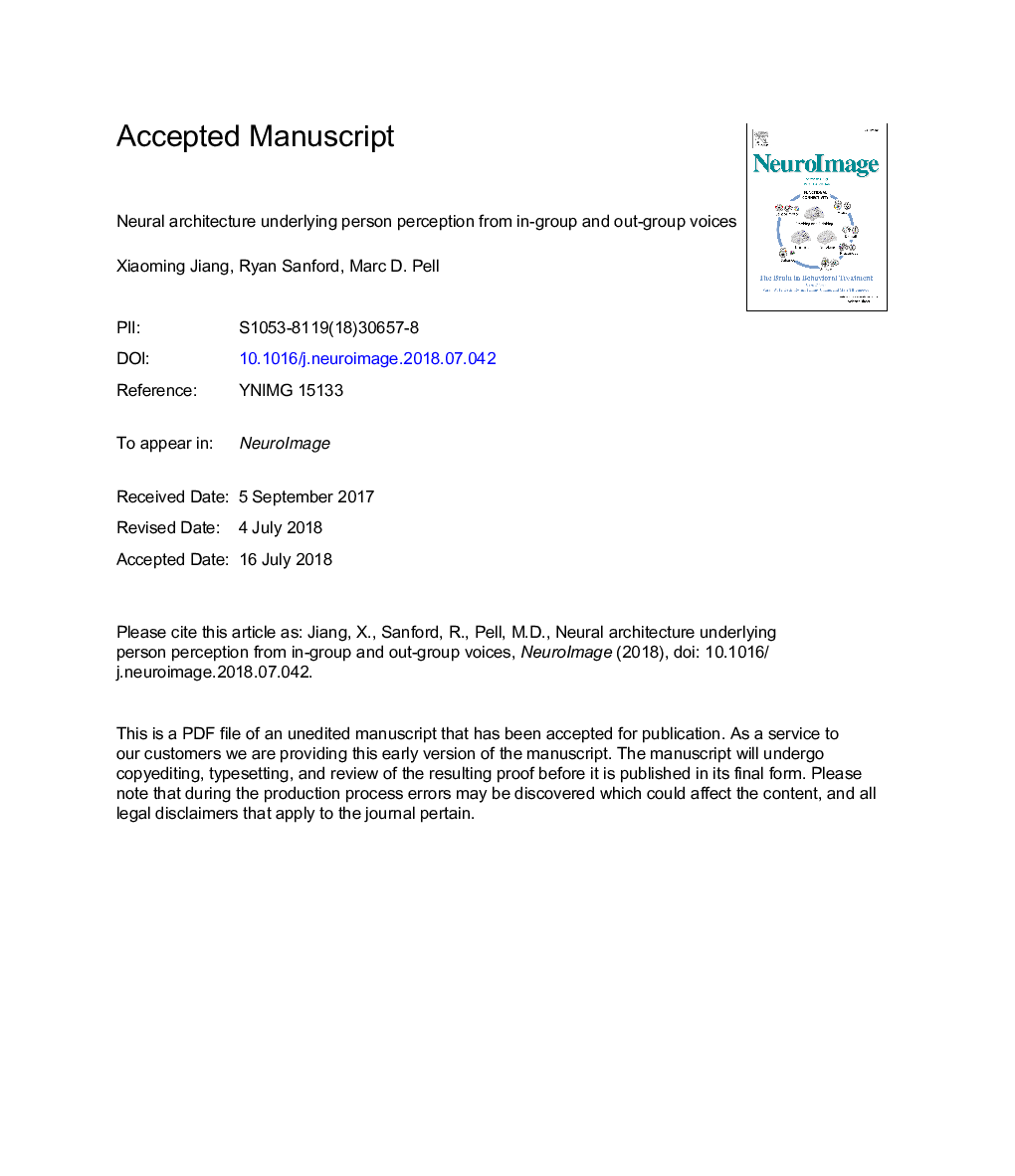| کد مقاله | کد نشریه | سال انتشار | مقاله انگلیسی | نسخه تمام متن |
|---|---|---|---|---|
| 8686661 | 1580830 | 2018 | 70 صفحه PDF | دانلود رایگان |
عنوان انگلیسی مقاله ISI
Neural architecture underlying person perception from in-group and out-group voices
ترجمه فارسی عنوان
معماری عصبی درک فرد از صدای گروهی و خارج از گروه است
دانلود مقاله + سفارش ترجمه
دانلود مقاله ISI انگلیسی
رایگان برای ایرانیان
کلمات کلیدی
موضوعات مرتبط
علوم زیستی و بیوفناوری
علم عصب شناسی
علوم اعصاب شناختی
چکیده انگلیسی
In spoken language, verbal cues (what we say) and vocal cues (how we say it) contribute to person perception, the process for interpreting information and making inferences about other people. When someone has an accent, forming impressions from the speaker's voice may be influenced by social categorization processes (i.e., activating stereotypical traits of members of a perceived 'out-group') and by processes which differentiate the speaker based on their individual attributes (e.g., registering the vocal confidence level of the speaker in order to make a trust decision). The neural systems for using vocal cues that refer to the speaker's identity and to qualities of their vocal expression to generate inferences about others are not known. Here, we used functional magnetic resonance imaging (fMRI) to investigate how speaker categorization influences brain activity as Canadian-English listeners judged whether they believe statements produced by in-group (native) and out-group (regional, foreign) speakers. Each statement was expressed in a confident, doubtful, and neutral tone of voice. In-group speakers were perceived as more believable than speakers with out-group accents overall, confirming social categorization of speakers based on their accent. Superior parietal and middle temporal regions were uniquely activated when listening to out-group compared to in-group speakers suggesting that they may be involved in extracting the attributes of speaker believability from the lower-level acoustic variations. Basal ganglia, left cuneus and right fusiform gyrus were activated by confident expressions produced by out-group speakers. These regions appear to participate in abstracting more ambiguous believability attributes from accented speakers (where a conflict arises between the tendency to disbelieve an out-group speaker and the tendency to believe a confident voice). For out-group speakers, stronger impressions of believability selectively modulated activity in the bilateral superior and middle temporal regions. Moreover, the right superior temporal gyrus, a region that was associated with perceived speaker confidence, was found to be functionally connected to the left lingual gyrus and right middle temporal gyrus when out-group speakers were judged as more believable. These findings suggest that identity-related voice characteristics and associated biases may influence underlying neural activities for making social attributions about out-group speakers, affecting decisions about believability and trust. Specifically, inferences about out-group speakers seem to be mediated to a greater extent by stimulus-related features (i.e., vocal confidence cues) than for in-group speakers. Our approach highlights how the voice can be studied to advance models of person perception.
ناشر
Database: Elsevier - ScienceDirect (ساینس دایرکت)
Journal: NeuroImage - Volume 181, 1 November 2018, Pages 582-597
Journal: NeuroImage - Volume 181, 1 November 2018, Pages 582-597
نویسندگان
Xiaoming Jiang, Ryan Sanford, Marc D. Pell,
